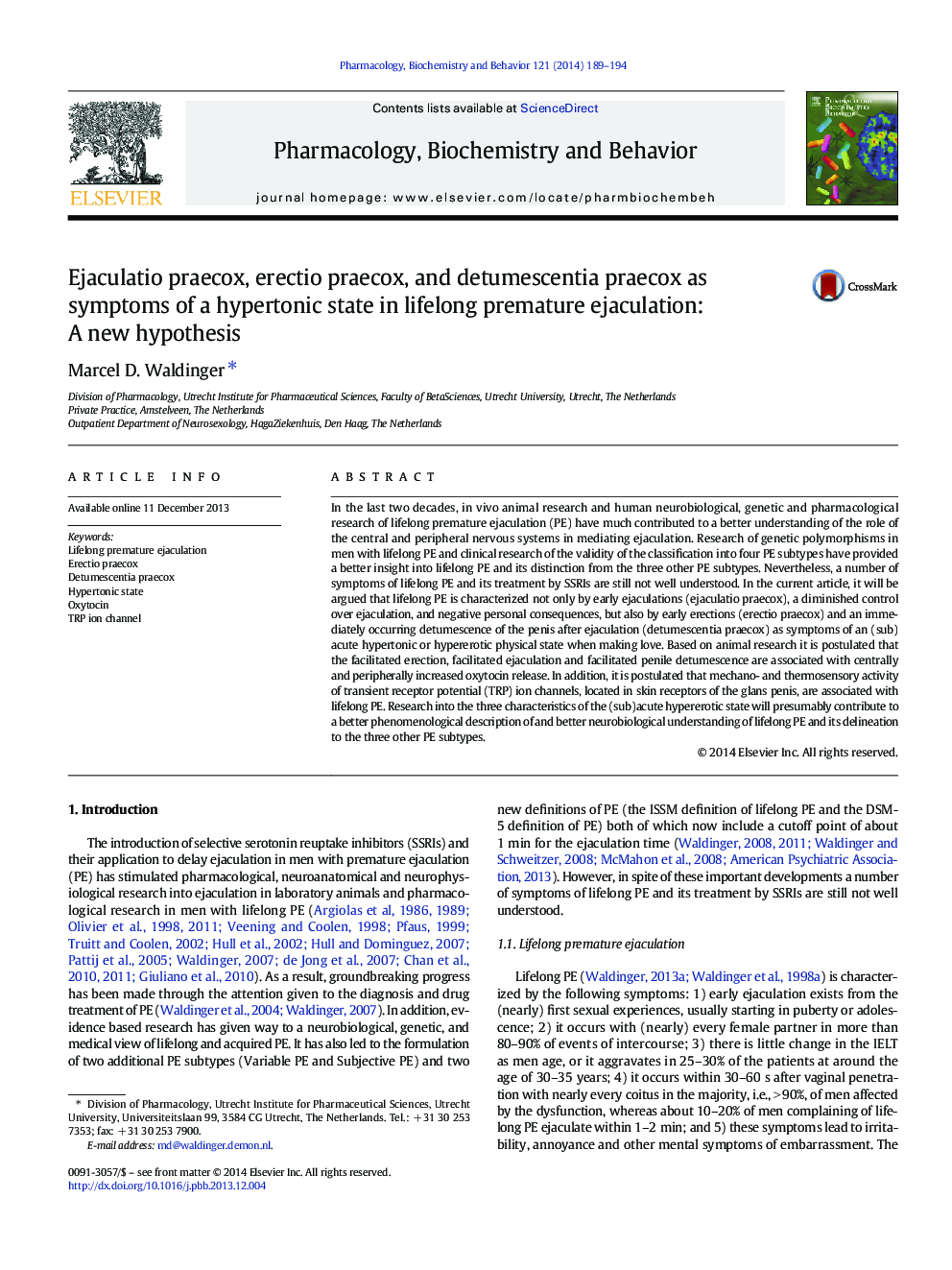| Article ID | Journal | Published Year | Pages | File Type |
|---|---|---|---|---|
| 2012855 | Pharmacology Biochemistry and Behavior | 2014 | 6 Pages |
In the last two decades, in vivo animal research and human neurobiological, genetic and pharmacological research of lifelong premature ejaculation (PE) have much contributed to a better understanding of the role of the central and peripheral nervous systems in mediating ejaculation. Research of genetic polymorphisms in men with lifelong PE and clinical research of the validity of the classification into four PE subtypes have provided a better insight into lifelong PE and its distinction from the three other PE subtypes. Nevertheless, a number of symptoms of lifelong PE and its treatment by SSRIs are still not well understood. In the current article, it will be argued that lifelong PE is characterized not only by early ejaculations (ejaculatio praecox), a diminished control over ejaculation, and negative personal consequences, but also by early erections (erectio praecox) and an immediately occurring detumescence of the penis after ejaculation (detumescentia praecox) as symptoms of an (sub)acute hypertonic or hypererotic physical state when making love. Based on animal research it is postulated that the facilitated erection, facilitated ejaculation and facilitated penile detumescence are associated with centrally and peripherally increased oxytocin release. In addition, it is postulated that mechano- and thermosensory activity of transient receptor potential (TRP) ion channels, located in skin receptors of the glans penis, are associated with lifelong PE. Research into the three characteristics of the (sub)acute hypererotic state will presumably contribute to a better phenomenological description of and better neurobiological understanding of lifelong PE and its delineation to the three other PE subtypes.
